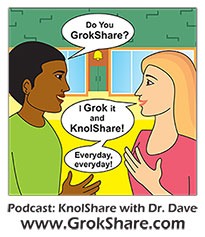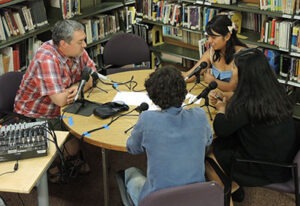Episode #1: Agile Pair Coaching with Victor Bonacci & Dr. Dave
Dr. Dave discuss pair coaching and the benefits to coaches and other individuals with Victor Bonacci, the founder of agilecoffe.com. Vic describes the resources available to people to learn more about pair coaching.
Show Notes:
Q1: Pair coaching
Pair coaching is pair working or pair anything. For me it is the work done daily by coaching, training, and mentoring teams and individuals and even the learning associated with pairing. When I coach alone I do not always get the feedback and learning to improve to get better.
Q2: Who would you pair with?
Starting with someone with the same experience would be good but working with an experienced coach would even be better. For example, a mother and father pair; raising a child together is an example of pairing outside of the office setting. You learn things together and grow accordingly to help each other over time.
Q3: Limited to agile only
I did not come up with the analogy of the mother and father pairing; I wish I could claim it. Yves Hanoulle is another person in pair coaching who spoke about the role of mother and father. That is an obvious example of pair coaching happening outside of the agile practice. Throughout your education and professional life you probably have been pairing with someone along the way, even though you may not have called it that. When you move into an agile environment the opportunities just open up, then you see agile practices that can benefit from pairing everywhere you look.
Q4: Would you say that this is mentoring that help another person get better in their field?
That’s it exactly but it goes beyond that! In Scrum you have a Scrum Master, Product Owner, and Scrum team. The Scrum Master and Product Owner is one of the best examples of paring that already exist in Scrum. They work hand in hand to prepare the backlog for each sprint to help the team know the highest prioritize work items. The Scrum Master would take a back seat role at times during the grooming (elaboration) sessions with the team. The Product Owner takes a back seat role as the Scrum Master leads a ceremony or help the team make a course corrective action.
Comment: This is a pilot / co-pilot model.
Hans had Chui, Michael had Kit – we all need our co-pilots.
Q5: How did you become interested in pair coaching?
We have been doing pair coaching and pair learning all of our lives. I was not aware of the term until the spring of 2012. I was hired by one of my previous employers as an agile coach and they did not have another coach in the organization. After eight months they hired another coach and it was awesome because I could share knowledge about the organizational culture and nuances and he could share his experiences with me as well. This helped us to build the teams to be stronger and we could support them better.
Q6: What website did you visit to gather this information?
I can’t remember where I first saw the term pair coaching. But again Yves Hanoulle’s name was on everything related to pair coaching and I followed those Google links to the information. I found lots of information at Yves site (http://www.hanoulle.be), there is a wealth of information that can be referenced there. However, there is not one website that’s available these days. Yves had a web site called www.paircoaching.net but it now points to the “pairworking” Google group.
Q7: How would this help another coach become better in his or her craft?
You learn more about your team, yourself, and the discipline of coaching by pairing up. You can have the pilot and co-pilot metaphor where one person drives and the other person navigates. One coach is actively training and the other observing without integrating themselves into the conversations or engagement as much. The observer take notes and prepares feedback when asked and being actively ready.
When you are charting new territory and going through a dense forest and there is not a real path, you are experimenting along the way. The second person you pair with can serve as a sounding board and help you make an informed decision. They will learn with you as well because it could be new knowledge to the paired partner.
Q8: If someone wanted to learn more about pair coaching where would they go?….
You probably have done some pair coaching along the way but just were not aware of the term. If you truly want to actively dive into the world of pair coaching, I would recommend to become aware a situation that you can start interacting with others. If you are a Scrum Master you may look at how you engage a Product Owner and think that we are a pair and how can we increase our skills together. Be explicit when talking about pair coaching and describe the mutual benefits for the person you plan to build a pairing situation.
Here are a few places people can go to learn more about pair coaching. Go to the web site www.paircoaching.net that now points to the “pairworking” Google group. I also have a few articles and blog posts on my website www.agilecoffee.com
Q9: How would someone get in touch with you?
The best way is to use my Twitter handle @AgileCoffe or go to my website www.agilecoffee.com.
Q10: Using the domino and pair coaching
I created a pair coaching domino game that described the roles of pair coaching and you can find more details at my website www.agilecoffee.com.
This interview was created and conducted by Dr. Dave Cornelius.
Podcast (ks_dd): Play in new window | Download (22.3MB) | Embed
Subscribe: Apple Podcasts | RSS

